

Things To DoThings To Do
Trattoria RecommendationsTrattoria Recommendations
Felice at Testaccio Hosteria Da Pietro Enoteca del Frate Taverna Trilussa Trattoria da Enzo al 29 Casa Bleve Quel che c’è laboratorio Di Cucina Piperno Al Ghetto VICO Pizza & Wine
Higher-End DiningHigher-End Dining
Dal Bolognese Antica Pesa Due Ladroni Pierluigi Fish Restaurant ILSanLorenzo Al Moro Aroma La Pergola All'Oro
Have you been to Rome before?Have you been to Rome before?
If yes, use this link to find some non-traditional things to do while exploring the city!

Trevi FountainTrevi Fountain
Fontana di Trevi is an 18th-century fountain designed by Italian architect Nicola Salvi and completed by Giuseppe Pannini in 1762. Standing at 86 ft. high and 161 ft. wide, it is the largest Baroque fountain in the city, and one of the most famous fountains in the world. Highly recommend visiting early in the morning or late at night for fewer crowds. There is a slight chance that for the jubilee, the fountain access will be restricted and require tickets at a small cost (1-2 euro), so be sure to check before you plan to visit.

PantheonPantheon
The Pantheon is a former Roman temple, and since AD 609, a Catholic Church (Basilica of St. Mary and the Martyrs). It is built on the site of an earlier temple commissioned by Marcus Agrippa during the reign of Augustus, and after that burnt down, the present building was ordered by the emperor Hadrian. It is one of the best-preserved ancient Roman buildings due to continuous use throughout its history. Basic entry tickets are 5 euro, but you can pay more for added features like audio tours. Since this is a consecrated church, dress codes will be enforced. Bonus tip: if you're a coffee fan, visit Tazza d'Oro right around the corner for the granita di caffe!
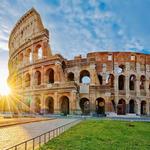
ColosseumColosseum
The Flavian Amphitheatre, more commonly known as the Colosseum, marks the archaeological heart of Rome and is the largest ancient amphitheatre ever built, as well as the largest still standing. Construction began under the emperor Vespasian, and it was completed in AD 80 by his successor, Titus. Further modifications were made during the reign of Domitian--three emperors that make up the Flavian dynasty. It could hold an estimated 50,000 to 80,000 spectators at various points throughout its history and was used for gladiatorial contests and public spectacles including animal hunts, executions, dramas, even staged ship battles. You may view the outside of the Colosseum for free, but entry requires tickets. This is one of, if not the most, popular Roman tourist attraction. Expect crowds and lines and people trying to sell you things.
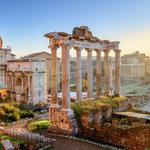
Roman ForumRoman Forum
Referred to in ancient times as the Forum Magnum, this was the center of day-to-day life in Rome. It has been called one of the most celebrated meeting places in the world, in all of history. Located in a small valley between Palatine and Capitoline Hills, today it is a sprawling ruin of architectural fragments. If interested, you can purchase a ticket that gives you entry into the Colosseum, the Roman Forum, and Palatine Hill.

Castel Sant'AngeloCastel Sant'Angelo
Also known as the Mausoleum of Hadrian, his ashes were placed here years after his death, as are his wife, Sabina, and his first adopted son, Lucius Aelius. The remains of succeeding emperors were also placed here, the last recorded deposition being Caracalla in 217. It is now a world-renown museum. Tickets are required.
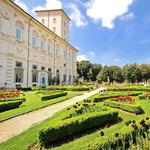
Villa BorgheseVilla Borghese
17th-century gardens on Pincian Hill. One of the largest urban parks in Rome. Built on a former vineyard, Villa Borghese now houses Galleria Borghese, one of the top art galleries in the world (containing famous masterpieces like Bernini's David as well as Caravaggio's David with the Head of Goliath) along with sculptures and fountains littered throughout the park. Don't miss the spectacular views of Rome near the Popolo Piazza entrance too. The gardens are lovely for a stroll. There are no entry fees for the gardens, but you will need tickets to visit the museums and other galleries within the park.
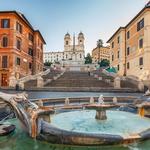
Spanish StepsSpanish Steps
Built in Rococo style between 1723 and 1726, the Spanish Steps lead from the Piazza di Spagna square to the French monastery church Trinita dei Monti. There are 135 steps and three different terraces, referring to the Holy Trinity. These steps were commissioned by the French, and the official name is Scalinata della Trinità dei Monti. However, the Spanish Embassy was located in the square while they were being built, giving way to the popular nickname.
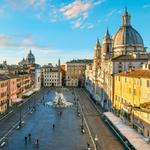
Piazza NavonaPiazza Navona
Piazza Navona is a public open space built on the site of the 1st century AD Stadium of Domitian and follows the form of the open space of the stadium in an elongated oval where ancient Romans would watch games. Its name, Navona, meaning 'big ship', refers to the flooding of the area and the mock naval battles once held there. It is also home to some of Rome's most famous fountains, like the Fountain of the Four Rivers and the Fountain of Neptune.
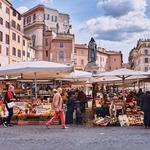
Campo de' FioriCampo de' Fiori
Campo de'Fiori (often referred to as just Campo) means "field of flowers." The name dates back to the Middle Ages when it was a meadow. It is a square just south of Piazza Navona. During the day, you’ll now find Rome’s most famous market engulf the piazza. You can find almost anything here, from fresh fruit and vegetables to meats and cheeses, clothes, and kitchenware At night, the area turns into a hot spot to enjoy aperitivo and cocktails.
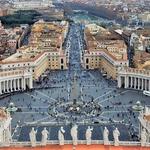
The Vatican Museums (Sistine Chapel) & St. Peter's BasilicaThe Vatican Museums (Sistine Chapel) & St. Peter's Basilica
Vatican City is the smallest country in the world. It is a city-state presided over by the Catholic church, with its own leader (the Pope), security forces (Swiss Guards) and currency (Vatican-issued euro). Inside the walls are the Vatican Museums, which are are vast (8-miles of corridors!) and contain huge collections of art and antiquities, including the world-famous Sistine Chapel. Outside of the Vatican walls is Piazza San Pietro and St. Peter's Basilica--the largest church ever built and home to Michelangelo's famous sculpture, La Pieta. It is free to enter but keep in mind dress codes, which are strictly enforced. Highly recommend booking Vatican museum tickets early and through the official website: https://www.museivaticani.va Booking through third party (Viator, GetYourGuide, etc.) means there is a risk your tickets won’t actually be available.

TrastevereTrastevere
This isn't so much a site as it is a neighborhood, and my favorite in all of Rome. When I think of Rome, I think of the cobblestone streets, narrow alleys, and tiny hole-in-the-wall shops and restaurants of Trastevere. Slightly off the beaten path of some of the sites on this list, but well worth a visit, especially at night!
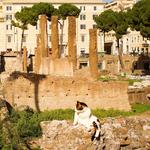
Mowgli's Suggestion: Torre Argentina Cat SanctuaryMowgli's Suggestion: Torre Argentina Cat Sanctuary
Largo di Torre Argentina is an open space in Rome with four large temples and the remains of Pompey's Theatre. As the site was being excavated, Rome's feral cats moved in. Gattare, or cat ladies, began feeding and caring for them. Today, volunteers care for about 130 cats, many of which are disabled or suffer from illness. Visitors can spot the cats from the street, or head down steps to an underground office to peruse the gift shop, donate, or adopt the cats. If the cat sanctuary doesn't pique your interest, this may: Julius Caesar was assassinated in the Largo Argentina square in the Curia of Pompey. Previously, this spot was only visible from street level. However, as of June 2023, tourists are able to access this square through a series of walkways and nighttime illumination. General admission is 5 euros and they are open every day except Monday.

Extended Stay Suggestion: Tivoli - Villa d'Este and Hadrian's VillaExtended Stay Suggestion: Tivoli - Villa d'Este and Hadrian's Villa
About 30-km east of Rome is Tivoli. It takes about 40 minutes to get there by train, and I recommend doing a self-guided tour (unless you also want to visit Hadrian's villa, which is further from the train station). Villa d'Este is a UNESCO World Heritage Site and one of the symbols of the Italian Renaissance. It is famous throughout the world for its enormous garden full of fountains and other water features. Hadrian's Villa is another UNESCO World Heritage Site, comprising the ruins and archaelogical remains of a large villa complex built around AD 120 by the Roman Emperor, Hadrian. It is the most imposing and complex Roman villa known and contains over 30 scenic buildings that covers an area larger than the city of Pompeii.
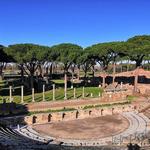
Extended Stay Suggestion: Ostia AnticaExtended Stay Suggestion: Ostia Antica
If you don't have time to go south to visit Pompeii, we suggest visiting Ostia Antica, once an ancient Roman city and the port of Rome, located at the mouth of the Tiber River. It is now a large archaeological site noted for excellent preservation of ancient buildings, frescoes, and impressive mosaics.
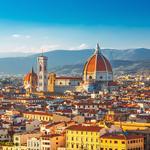
Extended Stay Suggestion: FlorenceExtended Stay Suggestion: Florence
If you have the time, consider taking the high-speed train to Florence for a day (~1.5 hour trip). One of the most charming cities in Italy, and the capital of Tuscany, it is known for its outstanding art (see: Michelangelo's David) and Renaissance architecture (see: il Duomo).